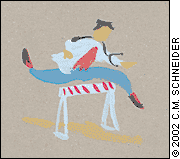
If your goals have never moved you to action, the problem may be your goals, not you.
Fam Pract Manag. 2002;9(1):68

I conduct a seminar that is very unpopular. It’s on goal setting, and in all honesty, it gets cancelled a lot. Some people think setting goals is an exercise in futility. Others are just too fearful to put in writing what they want to do with their lives and time.
When done right, goal setting isn’t futile and it shouldn’t scare you. Here are the steps:
Start with a vision of something you want. It can be anything, and it doesn’t have to be 10 years into the future. For example, “I’d like to open a small practice rather than be part of a large health care system.”
Don’t do a thing. Sit there, take a deep breath and imagine your vision is realized. Walk through every detail. How many partners, if any, will you have? What will the building look like? How will you feel about your patients? What will make you feel satisfied?
Decide whether you are really serious about this goal. Ask yourself this question, “If I don’t accomplish this goal, how will I feel five or 10 years from now?” If accomplishing this goal is truly important to you, you are more likely to muster the discipline you’ll need along the way.
Disappear. When you set goals, you need a quiet place where you can focus.
Get SMARTER. SMART goals have been around for a long time, but in today’s world we need to be SMARTER. Write down your goals using the SMARTER criteria, explained below.
SMARTER goals
To develop a SMARTER goal, ask yourself whether it meets the following characteristics:
S: Is your goal specific? A specific goal is “I want to open a small practice with two other physicians within two years” versus “I don’t want to be working here until I retire.”
M: Can you measure whether you’ve met the goal? The idea here is to make your goal tangible so you’ll know when you have achieved it. In the case of opening a new practice, you’ll have physical proof (a new office, partners, patients, etc.). But if your goal was simply to lose weight, you’d need to establish some concrete measures (e.g., 10 pounds).
A: Is your goal attainable? This is different than simply asking whether the goal is possible. The real question is whether the goal is possible for you at this point in time. For example, maybe a move in the next two years would disrupt your children’s final years of high school and you just don’t want to do that.
R: Is the goal relevant? Relevancy answers the question, “Is this goal intimately tied to what I say is most valuable to me in my life?” If simplicity and connection are your operating principles, having a smaller practice might support those values. Relevancy is what makes goals worth pursuing.
T: Can you track your progress toward the goal? The best way to track progress is to use the “wedding-planning approach.” Set the date and work backwards deciding what needs to be done each year, quarter, month or week to meet the deadline. Now you have a checklist to keep you on track.
E: Have you built elasticity into the process? It’s not just the goal that needs to be flexible; it’s also the goal setter. If you keep elasticity in mind, then changes along the way won’t discourage you. For example, you might decide in the end to have a solo practice in a semi-rural community instead of a small group practice in a suburban area. Such a change is acceptable, as long as the values you’ve chosen to guide your life (e.g., simplicity and connection) remain intact.
R: Will this goal be “rememberable.” In other words, is the goal something you will be able to look back on and remember with some sense of pride and satisfaction? For example, when you remember the day you could officially put MD behind your name, what do the muscles in your face tend to do? (Hopefully, your answer is “smile.”) This final characteristic of effective goals is often the most forgotten one. Many times, we create goals that fill us with dread and anxiety. What we really need are goals that move us to action because we can’t wait to celebrate them.